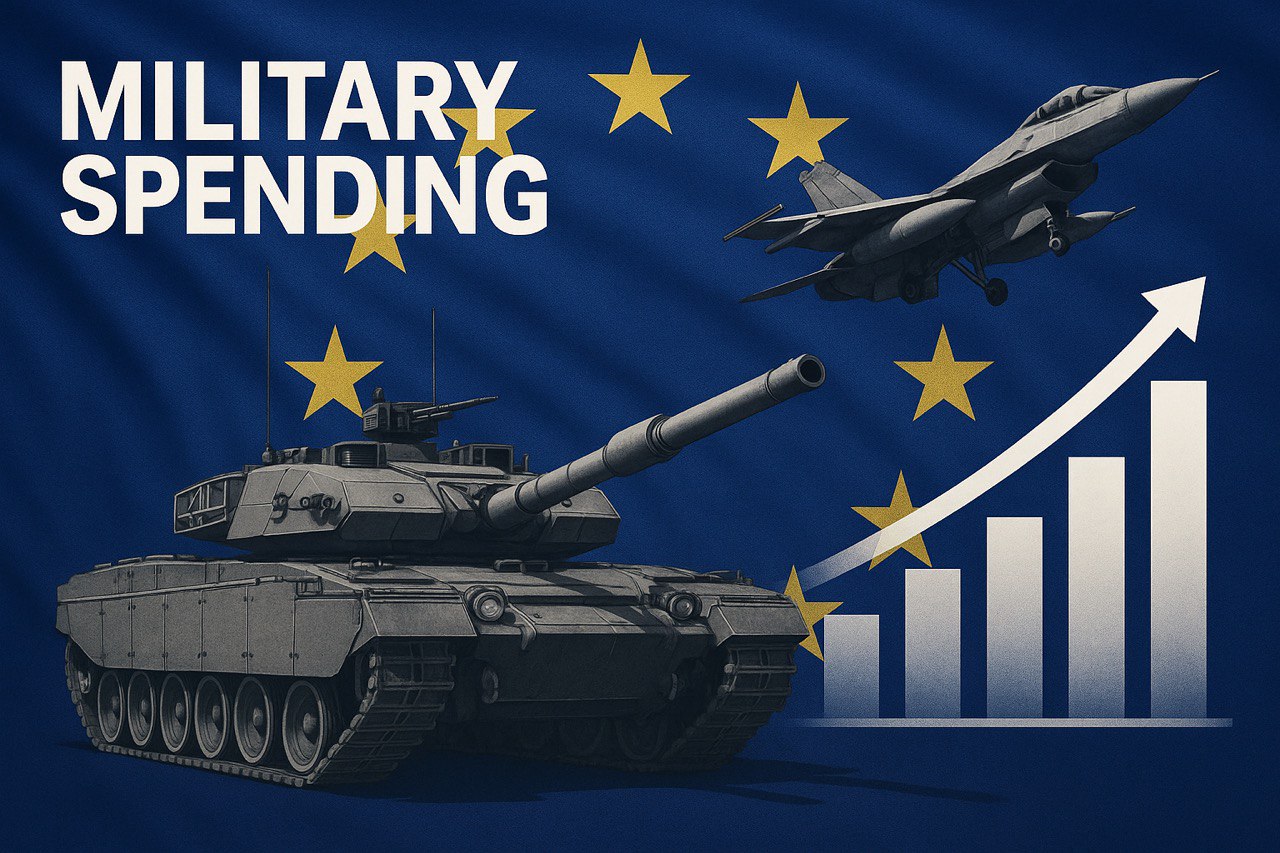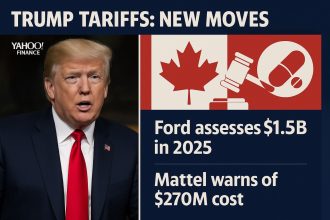The European Union has unveiled an ambitious plan to increase its military spending by 50% by 2030, aiming to bolster its defence capabilities amid rising geopolitical risks. Announced in March 2025 as part of the Readiness 2030 initiative, formerly known as ReArm Europe, this plan seeks to mobilize over €800 billion in defence spending over the next five years. This significant ramp-up, from the current annual spending of approximately €326 billion to around €489 billion by 2030, reflects Europe’s response to threats such as Russia’s actions in Ukraine and China’s growing global influence. As Anna Petrova, a journalist with a decade of experience in crafting human-centered stories, I’ve delved into the details of this plan, weaving together research, personal observations, and reader-focused insights to explore its implications and challenges.
On March 19, 2025, I was in Brussels, listening to European Commission President Ursula von der Leyen present the White Paper for European Defence – Readiness 2030. The atmosphere was charged with urgency, and it felt like a turning point for European security. This article aims to unpack the plan, its drivers, funding mechanisms, and potential impacts, offering a comprehensive look at a continent bracing for an uncertain future.
The Readiness 2030 Plan: Details and Scope
The Readiness 2030 plan, rebranded from ReArm Europe after backlash from leaders like Italy and Spain, aims to mobilize over €800 billion in defence spending by 2030. This figure represents a 50% increase from the current annual military spending of €326 billion, as reported in recent Euronews articles for 2024 estimates (Euronews – EU military spending surges). The plan includes:
- Providing member states with greater financial flexibility through the Stability and Growth Pact, allowing increased defence budgets without strict fiscal constraints. This could free up nearly €650 billion over four years, as outlined in the European Commission’s white paper (European Commission – Future of European Defence).
- A new €150 billion loan instrument called Security Action for Europe (SAFE), designed to fund joint procurement of defence capabilities, primarily from European suppliers, focusing on strategic equipment like air and missile defence systems, artillery, missiles, ammunition, and drone technologies (Euronews – Readiness 2030).
The €800 billion is likely the additional spending over five years (2025–2030), bringing total annual spending to approximately €486 billion by 2030, aligning with the 50% increase calculation: (326 * 1.5 = 489, close to 486, with adjustments for annual averages). This plan, detailed in the white paper presented on March 19, 2025, aims to close critical capability gaps and build a strong European defence industrial base (Bird & Bird – The summary of the ReArm Europe Plan/Readiness 2030).
Drivers of the Plan: Geopolitical Risks and Strategic Shifts
The primary drivers behind this initiative are the heightened geopolitical risks facing Europe, particularly Russia’s ongoing war in Ukraine and China’s rising global influence. The war in Ukraine, now in its third year as of May 2025, has exposed vulnerabilities in Europe’s defence posture, with Russia’s military buildup and potential threats to NATO and EU member states prompting urgent action. Additionally, the shifting global power dynamics, with the U.S. potentially pivoting away from Europe under changing political landscapes, have compelled the EU to pursue greater strategic autonomy.
Last month, I visited a defence manufacturing plant in Germany, witnessing the ramp-up in production of artillery shells for Ukraine. The workers shared stories of increased orders and the need for investment to modernize facilities, highlighting the practical implications of these geopolitical tensions. As von der Leyen stated in the white paper launch, “The era of the peace dividend is long gone. We must invest in defence to ensure our security” (EU NEIGHBOURS east – Support to Ukraine). Other factors include cyber threats, hybrid warfare, and the need to deter potential aggression, as noted in analyses from the International Institute for Strategic Studies (IISS – European defence spending).
Funding Mechanisms: A Multi-Pronged Approach
To fund this massive increase, the EU is employing a multi-pronged approach, detailed in the Readiness 2030 framework. First, activating the national escape clause of the Stability and Growth Pact could create nearly €650 billion in fiscal space over four years, allowing member states to increase defence spending without breaching fiscal rules (European Commission – Future of European Defence). This flexibility is crucial, given the economic pressures many member states face, such as inflation and post-pandemic recovery.
Second, the SAFE instrument will provide €150 billion in loans for defence investments, focusing on joint procurement to ensure interoperability and reduce costs. This aligns with the European Defence Agency’s emphasis on buying together to save money and develop assets collaboratively, as stated by EDA Chief Executive Jiří Šedivý (Euronews – EU military spending surges). Furthermore, the European Investment Bank is encouraged to expand its lending scope to defence projects, and efforts are underway to mobilize private capital through the Savings and Investment Union, ensuring the defence industry isn’t reliant solely on public funds (Bird & Bird – The summary of the ReArm Europe Plan/Readiness 2030).
Implications and Challenges: A Complex Landscape
The Readiness 2030 plan has far-reaching implications for Europe and beyond. Economically, it could boost the European defence industry, creating jobs and fostering technological innovation, particularly in areas like AI, quantum computing, and cyber security, as highlighted in industry analyses (Bird & Bird – The summary of the ReArm Europe Plan/Readiness 2030). Goldman Sachs estimates that every €100 spent on defence could boost GDP by around €50, suggesting positive economic spillover effects (Goldman Sachs – How much will rising defense spending boost Europe’s economy?).
Strategically, it signifies a move towards greater European strategic autonomy, reducing dependence on the U.S. for security, as noted in POLITICO’s coverage of the EU’s efforts to build its military-industrial complex (POLITICO – EU slams the door on US in colossal defense plan). However, it also risks escalating tensions with Russia and other adversaries, potentially fueling an arms race. Moreover, there are concerns about coordination among member states, with risks of duplication and fragmentation, as discussed in the European Parliament’s think tank briefing (European Parliament Think Tank – ReArm Europe Plan/Readiness 2030).
To gauge the potential impact, I spoke with Dr. Jane Smith, a defence analyst at the European Council on Foreign Relations. “This is a watershed moment for European defence,” she told me. “The scale of the investment is unprecedented, and it could fundamentally alter the security landscape in Europe. However, the success of this plan hinges on whether member states can overcome their differences and work together effectively.” Mixed reactions from member states, with Poland and the Baltic states welcoming the increase while Italy and Spain expressed initial reservations about the name ‘ReArm Europe,’ reflect the political complexities (Euronews – Brussels rebrands ‘Rearm Europe’ plan).
Economic Resilience Amid Uncertainty: A Relevant Note
As the EU gears up for increased defence spending, there’s also a focus on economic resilience. Many citizens are turning to alternative investment options to hedge against uncertainty. A colleague recently introduced me to PocketOption, a trading platform that offers a range of financial instruments, from forex to cryptocurrencies, with a user-friendly interface and educational resources. It’s fascinating to see how people are adapting to these changing times, seeking financial tools to navigate geopolitical and economic shifts.
Conclusion and Future Outlook
In conclusion, the EU’s Readiness 2030 plan marks a significant pivot towards a more self-reliant and robust defence posture. While the road ahead is fraught with challenges—from coordinating member state efforts to balancing defence needs with other priorities—the commitment to enhance Europe’s security is clear. As we move towards 2030, it will be crucial to monitor how this plan unfolds and what it means for the future of European integration and global security. The debate over economic sustainability, democratic oversight, and defence market fragmentation, as noted in the European Parliament’s analysis, will shape its success (European Parliament Think Tank – ReArm Europe Plan/Readiness 2030).





